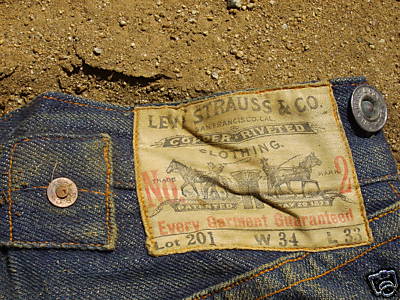Everyone who has ever been vintage shopping is after that one amazing find. It's that illusive piece, it might be designer or just a gorgeous fabric but either way it will forever be your key vintage discovery.
The only thing is that dating this uh-mazing piece can be a little bit tricky - you know it's old but wouldn't it be nice to know what era it came from? We'll I've done a lot of research and I've come up with this little list of tell-tale signs to help you put an age to any vintage piece you pick up.
The only thing is that dating this uh-mazing piece can be a little bit tricky - you know it's old but wouldn't it be nice to know what era it came from? We'll I've done a lot of research and I've come up with this little list of tell-tale signs to help you put an age to any vintage piece you pick up.
ZIPS
Take a quick look at any fastners on your item.
- Remember that zips only became popular in the 1930's and before that it was snap/button plackets that were used.
- Plastic introduced in the 1920's but rarely used due to lack of durability.
- Up until the 1970's you'll likely see metal zippers with cotton twill tape.
- Zippers were most commonly placed at the side-seam unti the 50's.
Labels
Labels are a bounty of information!
- The design, layout and typography of the label will all tell you something about the age of your item.
- Have a look elsewhere on the garment for any union labels that can be super-helpful when trying to date your vintage; here's a helpful guide for any info you might find.
- Check the fabric content! Rayon was used heavily until the 1950's, then nylon took over in popularity.
- Have a look elsewhere on the garment for any union labels that can be super-helpful when trying to date your vintage; here's a helpful guide for any info you might find.
- Check the fabric content! Rayon was used heavily until the 1950's, then nylon took over in popularity.
- This site is a seriously good resourse that lets you search your labels details: vintagefashionguild.org/label-resource-a-z/
* A small 'e' on a pair of Levis mean it was made after 1971 - a capital 'E' will be on a pair manufactured before that*
* A small 'e' on a pair of Levis mean it was made after 1971 - a capital 'E' will be on a pair manufactured before that*
Fabrics
- Polyester also became popular in the 50's, but it was commonly called Dacron. It only became known as 'polyeser' in the 60's.
- Spandex was first used in clothing in 1959 but it didn't become popular until the 80's.
- 'Qiana' is a type of nylon that was used in woven and knitted fabrics in the 1970's.
Dating Accessories
- Shoes made between 1800-1860 never had left or right sole shapes, unless they were made to order for a client!!
- A quick tip from the Vintage Fashion Organisation on identifing skills: "Croc has a dot, alligator not" - the dot is in the middle of the scale.
- Sandals only appeared in the 1930's, first in Europe then the US.
- Hats made pre-1930's will usually have hand-sewn lining.
- Stillettos came about in 1955 and pointed toes in '57.
- Hats with grosgrain ribbon along the inside only started in the 1930's.
Let us know if you've any other great tips for dating your vintage clothes, either here or on Facebook or Twitter!
:) Katie






No comments:
Post a Comment